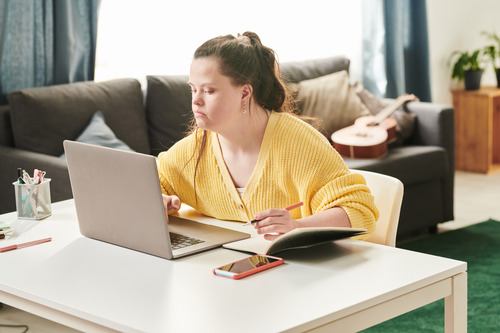Boroondara Disability Access and Inclusion Plan 2024–2028
Boroondara Disability Access and Inclusion Plan 2024–2028
About our plan
The Boroondara Disability Access and Inclusion Plan 2024–28 is our sixth disability action plan. It shows our commitment to making Boroondara more inclusive and accessible for people with disability. It builds on the achievements of our previous plans and recognises that improving disability access and inclusion is an ongoing journey.
Our vision: An inclusive and accessible Boroondara where people with disability participate in community life, have equal opportunities and feel proud of who they are.
Our plan’s purpose is to continue to promote equality and to reduce, remove and prevent external barriers for people with disability. Our plan is guided by the following principles that are informed by the United Nations Convention on the Rights of Persons with Disabilities and the Victorian Charter of Human Rights and Responsibilities:
- Disability is a natural aspect of human diversity.
- Everyone has equal access, rights and opportunities.
- People with disability are free to make their own choices and be respected for who they are.
- People with disability are experts in their own lives and need to be involved in decision-making that impacts them.
- People with disability have the right to be included in society as anybody else.
- Barriers to disability inclusion can be impacted by intersectionality. Intersectionality is when different aspects of a person’s identity such as disability, race, class, gender, and sexual identity can compound discrimination and disadvantage.
Our plan makes sure that we are meeting our requirements under the Victorian Disability Act 2006 to develop a disability action plan. It will also guide our efforts to improve Boroondara for people with disability.
Thank you
We want to thank everyone who shared their experiences and helped us create this plan. We especially want to thank the people with disability, their families and carers who helped us make this plan. We appreciate your time, expertise and ideas. We also want to thank the Boroondara Community Disability Advisory Committee members for their support, advice and guidance.
For any questions or feedback about our plan, you can contact our Social Inclusion Policy and Project Officer, Disability Access and Inclusion on (03) 9278 4017 or [email protected].
To ask for this document in a different format, please contact us.
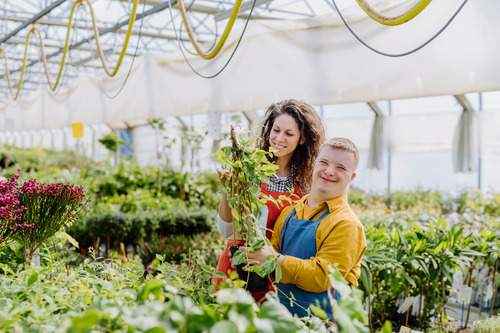
Download the full Boroondara Disability Access and Inclusion Plan 2024–2028
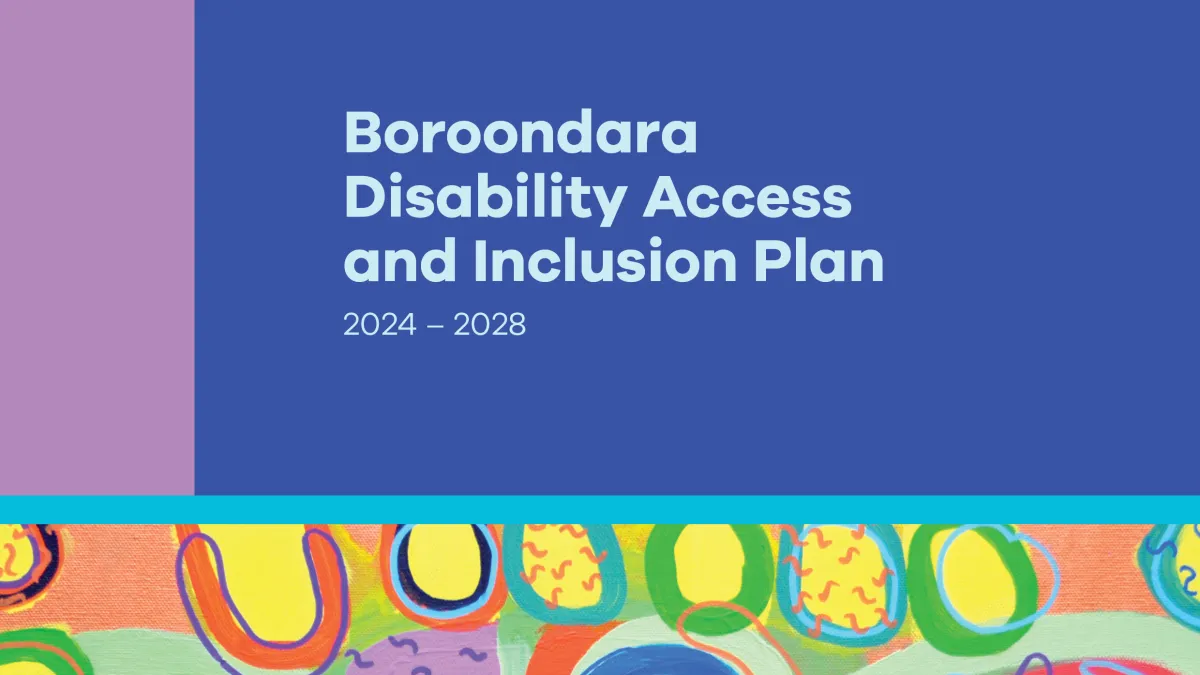
Download the Easy Read Boroondara Disability Access and Inclusion Plan 2024–2028
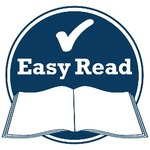
Read a summary of the Boroondara Disability Access and Inclusion Plan 2024–2028
Table of contents
Understanding disability
Understanding disability
The concept of disability is broad and evolving. We base our definition of disability on the:
- United Nations Convention on the Rights of Persons with Disabilities
- Inclusive Victoria: state disability plan 2022–2026
- social model of disability.
We define disability as a long-term impairment that when interacting with various external barriers, prevents or limits community participation.
An impairment can be:
- physical
- mental health
- intellectual
- cognitive
- learning
- communication
- sensory.
It can be permanent, episodic, visible or invisible.
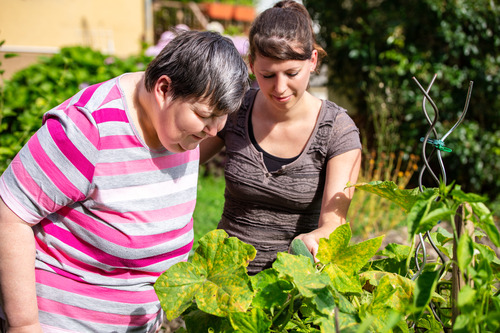
Social model of disability
This model recognises that barriers in a community or environment can prevent or limit community participation. For example, a flight of stairs with no ramp or lift into a building is disabling, not a person’s need to use a wheelchair.
Using the social model of disability means Council can strive to better detect, remove and prevent external barriers for people with disability. This model also gives people with disability more autonomy, choice and self-determination. It supports the human rights of people with disability to make their own choices, be seen as individuals, respected for who they are, have equal opportunities, and access and be included in society.
The language we use
Disability is understood in different ways in our community. Factors such as experience, identity and culture can shape peoples’ notions of disability. This means people can have different preferences for how their disability is described. We understand that language and people’s language preferences can change.
We use ‘person-first’ language in our plan. This language supports a person’s right to be understood without reference to their disability. An example of this language is saying ‘person with disability’. However, we also understand that many people with disability prefer ‘identify-first’ language, as they consider their disability a key part of who they are. An example of this language is saying ‘disabled person’.
We respect people’s right to choose how they are described. When people share their preferences with us, we always try to refer to people in the way they would prefer.
Pagination links
About our community
About our community
People with disability are diverse. They can differ in:
- culture
- language
- sexuality
- gender identity
- age
- ability
- socioeconomic status
- life experiences.
People’s experiences of disability are also different, as disability can be:
- visible or invisible
- permanent or episodic
- from birth or happen at any point during someone’s life.
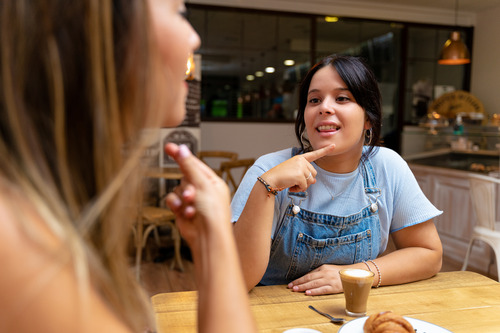
Australia
According to the Australian Bureau of Statistics:
- 17.7% (4.4 million) of Australians have disability.
- 32% (1.4 million) of people with disability have a severe or profound disability.
- 47.8% (nearly 5 out of 10) people with disability are employed, compared with 80.3% (8 in 10) people without disability.
According to the Australian Institute of Health and Welfare:
- The prevalence of disability generally increases with age. In Australia:
- 7.6% of children aged 0–14 have disability
- 9.3% of people aged 15–24 have disability
- 13% of people aged 25–64 have disability
- 50% of people aged 65 and over have disability.
- 76.8% of people with disability (nearly 3 in 4) have a physical disability as their main type of disability.
- 23.2% of people with disability (1 in 4) have a mental or behavioural disability as their main type of disability.
- Aboriginal and Torres Straight Islander peoples are 1.9 times more likely to have disability or restrictive long-term health conditions, compared to non-Aboriginal and Torres Straight Islander peoples.
- 41% of people with disability aged 15–64 have income from wages or salary, compared with 73% of people without disability.
According to People with Disability Australia, 1 in 4 people with disability in Australia are culturally and linguistically diverse.
According to LGBTIQ+ Health Australia, 39% of LGBTQIA+ people aged 14–21 identify as having disability or a long-term health condition.
Boroondara
According to the Australian Bureau of Statistics:
- an estimated 11.4% (20,500) of Boroondara residents have disability.
- 4.5% (7,516) of Boroondara residents have a severe or profound disability, compared to 5.8% of residents across Australia.
- Compared to Boroondara residents aged under 65, residents aged 65 and over have 10 times the rate of severe or profound disability.
- More females in Boroondara have disability than males.
- There are 2,395 National Disability Insurance Scheme (NDIS) participants in Boroondara. The most common primary disabilities of these participants are:
- autism (849 people)
- psychosocial disability (310 people)
- intellectual disability (305 people)
- developmental delay (188 people).
- 14.3% of Boroondara residents are carers, which is higher than the national average of 11.9%.
- 60% of carers in Boroondara are female.
According to the NDIS:
- 24 (1%) NDIS participants in Boroondara who identified as Aboriginal and Torres Straight Islander
- 305 (12.7%) NDIS participants in Boroondara who identified as culturally and linguistically diverse.
- The most common age groups in Boroondara who are part of the NDIS are:
- 0–6 years (298 people)
- 7–14 years (591 people)
- 45–54 years (252 people)
- 55–64 years (325 people).
Pagination links
How we created our plan
How we created our plan
We developed the Boroondara Disability Access and Inclusion Plan using:
- evaluation
- research and benchmarking
- community and service provider consultation
- workshops with community members and organisations.
We promoted the opportunity to take part in community consultation through disability groups, organisations and networks. We used different accessible communication methods and tools, such as:
- instructional information in plain language, Easy Read and Auslan
- online and printed plain language surveys
- online and printed Easy Read surveys
- the option to provide submissions in a written, audio or video format
- interviews with community members and representatives from organisations
- workshops with people with lived experience of disability
- workshops with people who work in the disability sector.
We also held workshops with the Boroondara Community Disability Advisory Committee to ask for their feedback and advice.
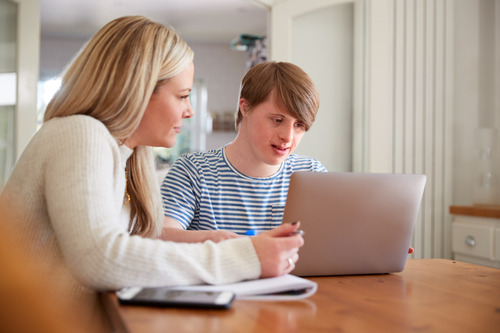
What we heard from the community
We gathered feedback from 350 community members and organisations.
This included:
- hearing from 211 people through the community consultation for the development of this plan
- analysing 139 responses that included references to disability access and inclusion from the community consultation in late 2020 to early 2021 for the renewal of the Boroondara Community Plan.
We used this feedback to create the themes, strategic objectives and actions in the plan. Some feedback the community shared is not within our scope of work or services. However, we still try to advocate to other levels of government or support partnerships between different groups in the community.
Community members and organisations told us they need:
- more accessible spaces, amenities and infrastructure to move safely around Boroondara
- more communication in accessible formats about services, programs and supports
- more inclusive opportunities for recreation, community and social participation
- to be involved in decision-making that impacts their lives
- Council to show leadership in disability access and inclusion and to upskill our staff
- Council to support and encourage disability pride
- Council to play a role in improving community attitudes towards people with disability
- more appropriate and affordable housing
- more employment opportunities.
We also heard there are issues with:
- accessing health services and the NDIS
- funding models for disability organisations
- disability organisations being able to provide supports and services because of volunteer shortages.
Pagination links
2024–26 Implementation Plan
2024–26 Implementation Plan
The 2024–26 Implementation Plan includes the actions we will take over the first 2 years of the Boroondara Disability Access and Inclusion Plan.
We have aligned each action to one of the 5 key themes in our plan, which came from our consultation and research:
- Theme 1 – Celebration and belonging
- Theme 2 – Access and safety
- Theme 3 – Inclusive community
- Theme 4 – Employment and volunteer opportunities
- Theme 5 – Participation in decision-making.
We have also included the overall strategic objectives for each theme, which reflect the goals of our community.
Operating budget and capital works budget will cover the cost of our plan’s actions. For 2 actions, we may look for grant opportunities to enhance what we can deliver.
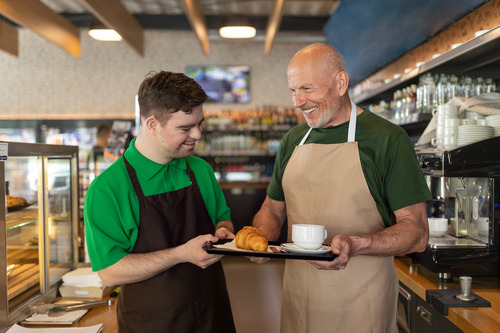
Pagination links
Theme 1: Celebration and belonging
Theme 1: Celebration and belonging
Strategic objective: People with disability feel accepted by the community and can feel proud of their identity.
What we will do
- Engage people with disability, including from diverse backgrounds and community organisations, to hold a minimum of 2 community activities or events annually to recognise and celebrate dates of significance to people with disability (for example, International Day of People with Disability).
- Consult with people with disability to develop and deliver a communication campaign that increases the community’s understanding of disability and addresses discrimination towards people with disability (also known as ableism).
- Increase knowledge and understanding within Council by researching and incorporating best practice access and inclusion, accessible communication and universal design principles, and capturing these learnings in planning tools for use by the whole organisation.
What we want to achieve
- People with disability feel that their contributions and achievements are celebrated and acknowledged.
- People with disability feel included in the community and experience less disability-related discrimination.
- Council staff have a greater understanding and apply best-practice access and inclusion, accessible communication and universal design principles in their work.
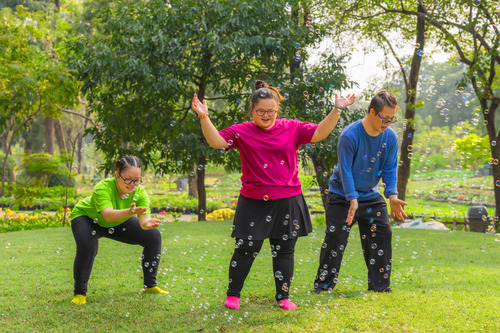
Pagination links
Theme 2: Access and safety
Theme 2: Access and safety
Strategic objective: Boroondara’s places and spaces are safe and easy to access and use for people with disability.
What we will do
- New Council major capital works and renewals including facilities, playgrounds, parks and shopping precincts, incorporate Disability (Access to Premises – Buildings) Standards 2010 and the Australian Standards, and where possible incorporate universal design principles.
- Continue to improve accessibility on paths of travel within parks and open spaces, as well as streets and roads through maintaining and upgrading features, such as accessible parking, tactile indicators, kerb access, signage, line markings and infrastructure, such as seating.
What we want to achieve
- Improved safety and access to Council’s facilities and open spaces by people with disability.
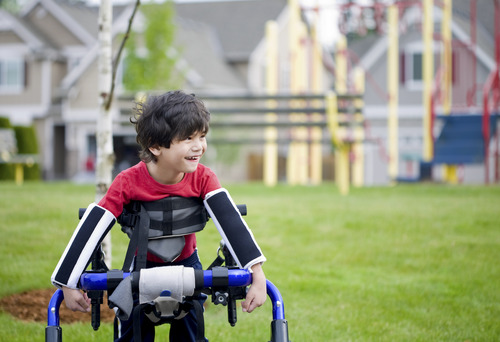
Pagination links
Theme 3: Inclusive community
Theme 3: Inclusive community
Strategic objective: Boroondara is inclusive and people with disability can participate in social and community life.
What we will do
- Encourage more community organisations and people with disability to apply for grants through the Community Strengthening Grants, Individual Participation Grants and the Community Arts Venue Grants for programs and activities for people with disability.
- Increase the participation of children, young people and adults with disability in our families, youth, active ageing, libraries, sports and recreation, and arts and culture programs.
- Ensure Council’s website is accessible by complying with the latest version of the Web Content Accessibility Guidelines (WCAG) and provide content to support greater understanding of accessible facilities, parks, playgrounds, programs and activities in Boroondara.
What we want to achieve
- Increase opportunities for people with disability to participate in social and community life.
- Increased opportunities for people with disability to participate in Council programs and activities.
- People with disability can use Council’s website and information about disability access in Boroondara is easy to find on the website.
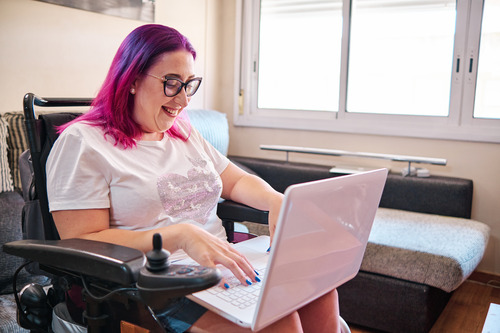
Pagination links
Theme 4: Employment and volunteer opportunities
Theme 4: Employment and volunteer opportunities
Strategic objective: There are employment and volunteer opportunities for people with disability in Boroondara.
What we will do
- Build knowledge and skills within Council to be a more accessible and inclusive workplace for people with disability.
- Promote the benefits of being accessible and inclusive for people with disability to volunteer organisations.
- Facilitate the delivery of a disability-inclusive employment pilot program with relevant partners, which places local people with disability into meaningful employment with local businesses.
- Review Council’s procurement policy to identify ways to enhance social procurement opportunities.
What we want to achieve
- Council is a more accessible and inclusive workplace.
- People with disability engaged in volunteer opportunities.
- People with disability engaged in ongoing meaningful employment by local businesses in Boroondara.
- Employment and volunteer opportunities for people with disability.
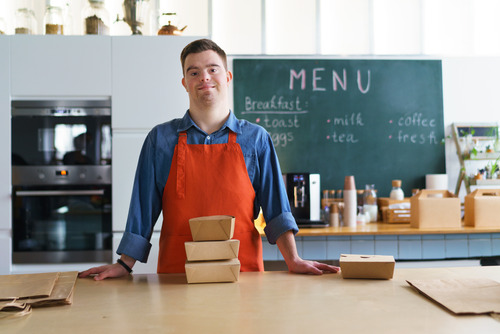
Pagination links
Theme 5: Participation in decision-making
Theme 5: Participation in decision-making
Strategic objective: People with disability have opportunities to participate in decision-making that affects their lives.
What we will do
- Identify a pilot project to co-design with people with disability and organisations to inform Council’s approach to co-designing projects.
- In collaboration or consultation with people with disability and community partners, advocate to the Victorian and Australian governments and peak bodies to address social, equity, health and wellbeing issues that impact people with disability (for example, the NDIS, mental health, social isolation, people sleeping rough, family violence, built environment and public transport).
- Develop a detailed evaluation plan to measure the success of the actions in the Boroondara Disability Access and Inclusion Plan 2024–28 with input and advice from the Boroondara Community Disability Advisory Committee.
What we want to achieve
- People with disability inform the development and delivery of a Council project.
- Improved social, economic, health and wellbeing outcomes for people with disability.
- People with disability inform the evaluation of the Boroondara Disability Access and Inclusion Plan 2024–28.
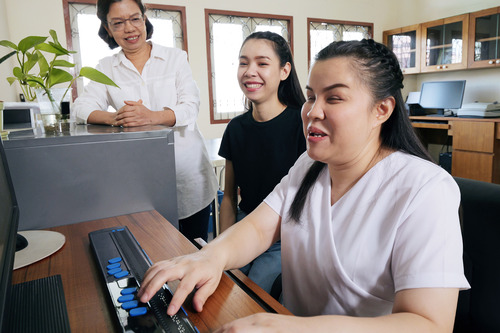
Pagination links
How we will monitor and evaluate our plan
How we will monitor and evaluate our plan
We will regularly monitor, report and evaluate how well we are delivering the actions in the Boroondara Disability Access and Inclusion Plan.
To monitor progress and support implementation of our plan we will:
- develop an evaluation plan and outcomes framework with support from the Boroondara Community Disability Advisory Committee
- report against actions in our internal corporate reporting system, Pulse
- publish our progress in the Annual Report
- give a yearly update to the Boroondara Community Disability Advisory Committee on the progress of actions in our plan
- complete a review after 2 years to make sure our plan is still in line with the goals and priorities of people with disability in our community
- monitor the progress and changes required from the draft Disability Inclusion Bill, the Disability Royal Commission and the NDIS Review
- regularly ask for input from the Boroondara Community Disability Advisory Committee
- refresh and update our plan in 2028.
